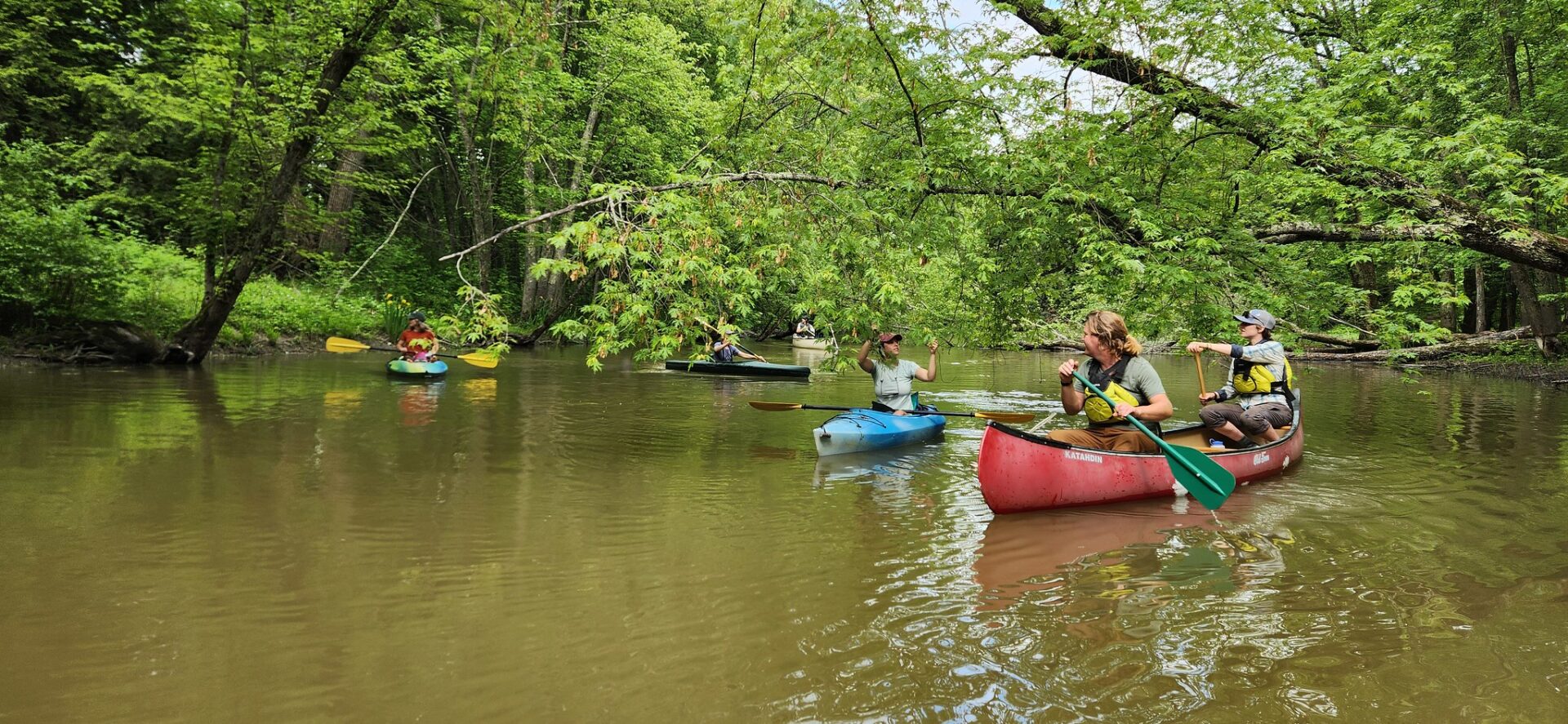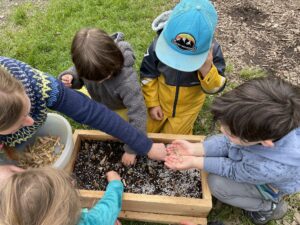Planting Tomorrow’s Forest

By Sean Beckett, Program Director
Live in Vermont for 30 years, and you think you know maple trees — until you try to grow some! Last spring our Vermont Master Naturalist cohort paddled up the LaPlatte River in Shelburne on a mission to collect seeds from Silver Maples, an important floodplain forest tree that we are working to restore to NBNC through propagation in our new conservation nursery. The timing had to be just right: a few days too late, and the seeds would be washed downstream, rotted, or already germinating in the riverside mud. A few days too early, and the seeds wouldn’t ripen or germinate in the soil of our new propagation boxes. Our partners at the Intervale Conservation Nursery and the Riparian Lands Native Seed Partnership warned us that we’d missed our window — their collection crews had run out of Silver Maple seeds in the
Champlain Valley a few days earlier.
We remained hopeful. Their crews had searched on foot, but we were exploring from canoes. We launched onto the river, portaged our way around log jams, dodged a passing thunderstorm, and entered into a verdant riverside forest full of wildlife. A Pileated Woodpecker worked a tree stump near shore amid otter and beaver sign, while orioles sang from pendulous nests in the canopies over the water.
And Silver Maple seeds were everywhere. While not a single seed was left in the tall canopy trees, the riverbank trees that leaned low and horizontal over the water were draped in curtains of ripe, papery seeds.
Our technical advisor on this nursery endeavor, pollinator ecologist and tree farmer Jason Mazurowski, suspected that these low trees still had seeds because their flowers were pollinated later in the spring. The Silver Maple specialist pollinators likely emerged early to take advantage of the prolific maple flowers high in the canopy, while the flowers of these trees, seventy feet below, went overlooked until different pollinators found them later in the spring.
Back at NBNC, the Vermont Master Naturalist team filled propagation boxes with potting soil, perlite, and old wood chips, a mixture tuned to hold moisture yet easily drain excess water — imitating the wet-but-well-draining floodplain forest soils where Silver Maples naturally thrive.
 The Master Naturalists then handed the boxes off to our Forest Preschoolers, who planted the seeds in dense rows in the boxes. This quickly became a lesson about sharing space and taking turns, and an opportunity to practice fine motor skills. The seeds germinated a week later, right on cue on preschool graduation day.
The Master Naturalists then handed the boxes off to our Forest Preschoolers, who planted the seeds in dense rows in the boxes. This quickly became a lesson about sharing space and taking turns, and an opportunity to practice fine motor skills. The seeds germinated a week later, right on cue on preschool graduation day.
“Half the battle of plant propagation is getting a seed to germinate,” Jason cautioned. “The other half is keeping it alive.” So began the ongoing commitment to protecting these 200 young saplings from rodents, slugs, snake worms, deer, floods, droughts, and pathogens, while simulating the specific environmental conditions they prefer in the wild.
The maples now grow in the nursery alongside hazelnuts, elderberries, dogwoods, and poplars, each with its own collection and propagation story.
Our new, floodplain-focused conservation nursery is a small step towards climate and flood resilience in our watershed and community. The health of the North Branch River will benefit from the trees and shrubs we grow, but we are especially excited about this hands-on “teaching nursery” becoming a hub for folks to discover richer connections with nature by learning about, experimenting with, and caring for plants.
Special thanks to the Vermont Urban & Community Forestry Program’s Caring for Canopies program for making this nursery possible.

